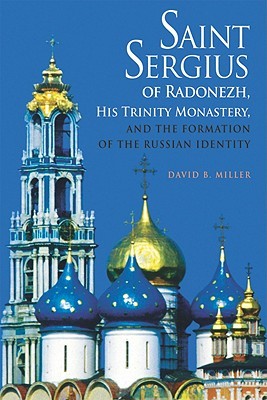
- We will send in 10–14 business days.
- Author: David B Miller
- Publisher: Northern Illinois University Press
- ISBN-10: 0875804322
- ISBN-13: 9780875804323
- Format: 15.8 x 23.4 x 3.3 cm, hardcover
- Language: English
- SAVE -10% with code: EXTRA
Saint Sergius of Radonezh, His Trinity Monastery, and the Formation of the Russian Identity (e-book) (used book) | bookbook.eu
Reviews
Description
When Sergius of Radonezh founded a monastery near Moscow, his example spawned a movement of monastic foundations throughout Russia. Within three decades of his death in 1392, Sergius was recognized as a saint, and by 1450 many considered him the intercessor for the Russian land who freed its people from Mongol rule. Over the next century and a half, thousands sought St. Sergius' intercession with gifts to the monastery. Moscow's rulers made Sergius patron saint of their dynasty and of the Russian tsardom. By 1605, the Trinity-Sergius monastery was the biggest house in Russia. Miller presents Trinity's dramatic history from the fourteenth century to the beginning of the Time of Troubles. Using extensive archival materials, he traces the evolution of Trinity's relationship to Sergius' venerators and its traditions, governance, social composition, and the lifestyle of its members. In lucid prose, Miller argues that St. Sergius' cult and monastery became integrating forces on a national scale and vital elements in the forging of a Russian identity, economy, and cohesive society. The power of religion to shape national identity is a lively topic today, and Miller's study will interest both medievalists and modern historians, as well as readers of Orthodox Church history.
EXTRA 10 % discount with code: EXTRA
The promotion ends in 19d.00:30:05
The discount code is valid when purchasing from 10 €. Discounts do not stack.
- Author: David B Miller
- Publisher: Northern Illinois University Press
- ISBN-10: 0875804322
- ISBN-13: 9780875804323
- Format: 15.8 x 23.4 x 3.3 cm, hardcover
- Language: English English
When Sergius of Radonezh founded a monastery near Moscow, his example spawned a movement of monastic foundations throughout Russia. Within three decades of his death in 1392, Sergius was recognized as a saint, and by 1450 many considered him the intercessor for the Russian land who freed its people from Mongol rule. Over the next century and a half, thousands sought St. Sergius' intercession with gifts to the monastery. Moscow's rulers made Sergius patron saint of their dynasty and of the Russian tsardom. By 1605, the Trinity-Sergius monastery was the biggest house in Russia. Miller presents Trinity's dramatic history from the fourteenth century to the beginning of the Time of Troubles. Using extensive archival materials, he traces the evolution of Trinity's relationship to Sergius' venerators and its traditions, governance, social composition, and the lifestyle of its members. In lucid prose, Miller argues that St. Sergius' cult and monastery became integrating forces on a national scale and vital elements in the forging of a Russian identity, economy, and cohesive society. The power of religion to shape national identity is a lively topic today, and Miller's study will interest both medievalists and modern historians, as well as readers of Orthodox Church history.


Reviews